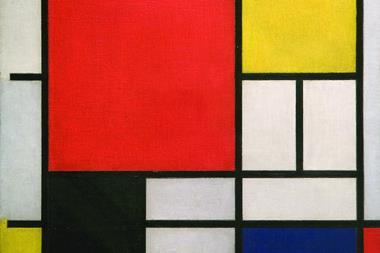The Dutch 17th century master Rembrandt first laid down a lead-containing substance on his famous painting The Night Watch before he applied the first layer of paint to the canvas, according to new analysis led by researchers in the Netherlands. The team used x-ray fluorescence and a computational microscopic imaging method called ptychography to uncover this technique, which had never been observed before with Rembrandt or his contemporaries.
The traditional way of preparing a canvas in the Netherlands in the 17th century involved animal glue, which has been documented to fail under humid conditions. But in The Night Watch there is no indication of a glue-size layer in any of the paint samples. Instead, the canvas appears to have been impregnated with a lead-containing oil.
Rembrandt probably used this previously unknown lead-rich layer below the quartz-clay ground layer of the canvas to serve as a protective barrier. The discovery sheds new light on Rembrandt’s artistic techniques and is one of the first times this combination of synchrotron-based techniques has been used on a historic paint micro-sample.

The Night Watch was originally commissioned for the Kloveniersdoelen, which was a prominent shooting range in Amsterdam at the time, and it hung in a great hall on the long exterior wall-facing windows. To protect the painting from humidity, the authors hypothesise that the canvas was impregnated with the organic material containing lead, probably an oil, before Rembrandt began applying the ground layer of the painting.
This discovery not only reveals new insights into the composition and materials Rembrandt used to create The Night Watch, it also sheds light on his artistic process.
This work emerges from a massive research, restoration and conservation project called Operation Night Watch, which was initiated in 2019 by Rijksmuseum – the national museum of the Netherlands dedicated to Dutch arts and history – with the goal of the masterpiece’s long-term preservation.
References
FTH Broers et al, Sci. Adv., 2023, DOI: 10.1126/sciadv.adj9394

















No comments yet